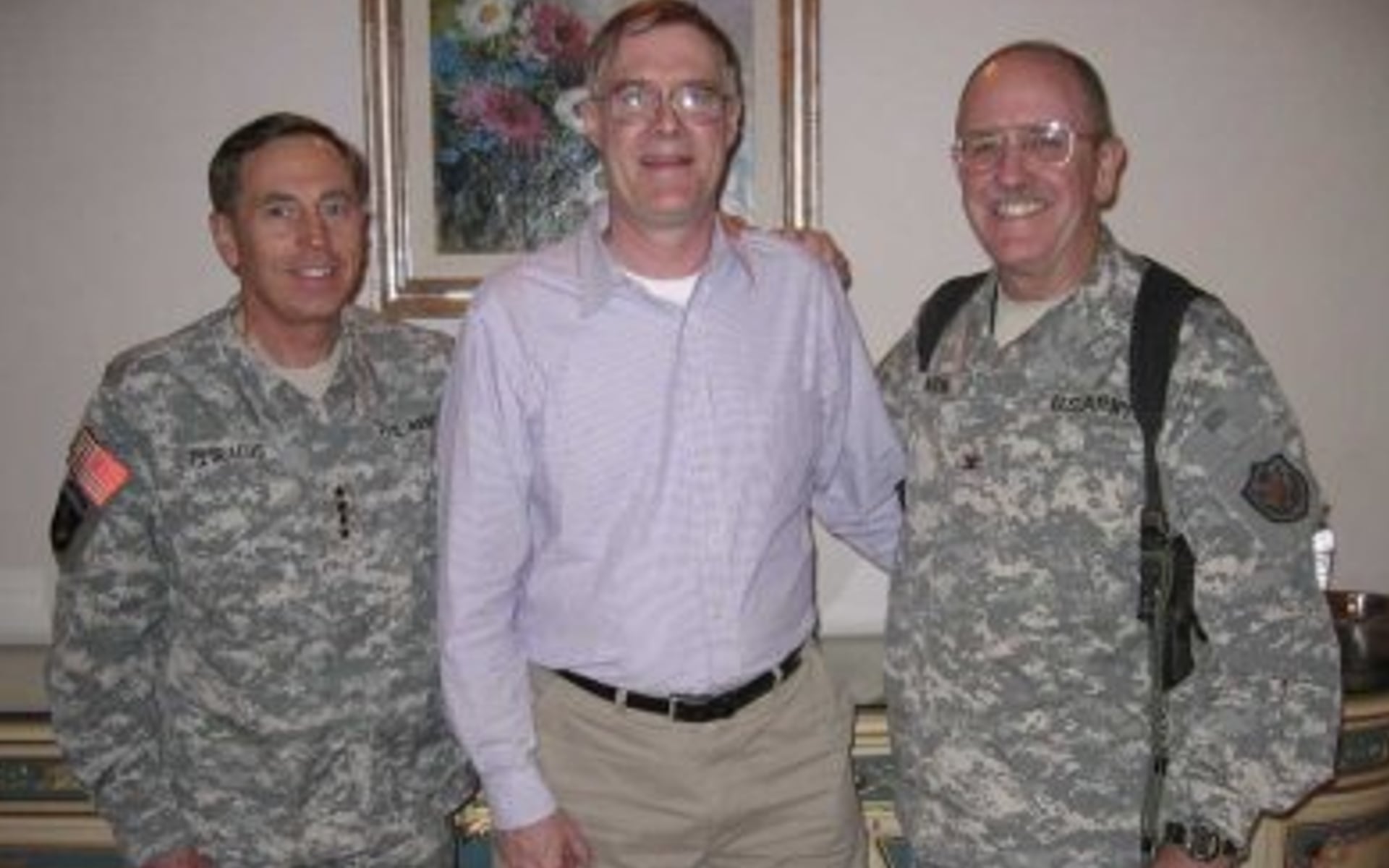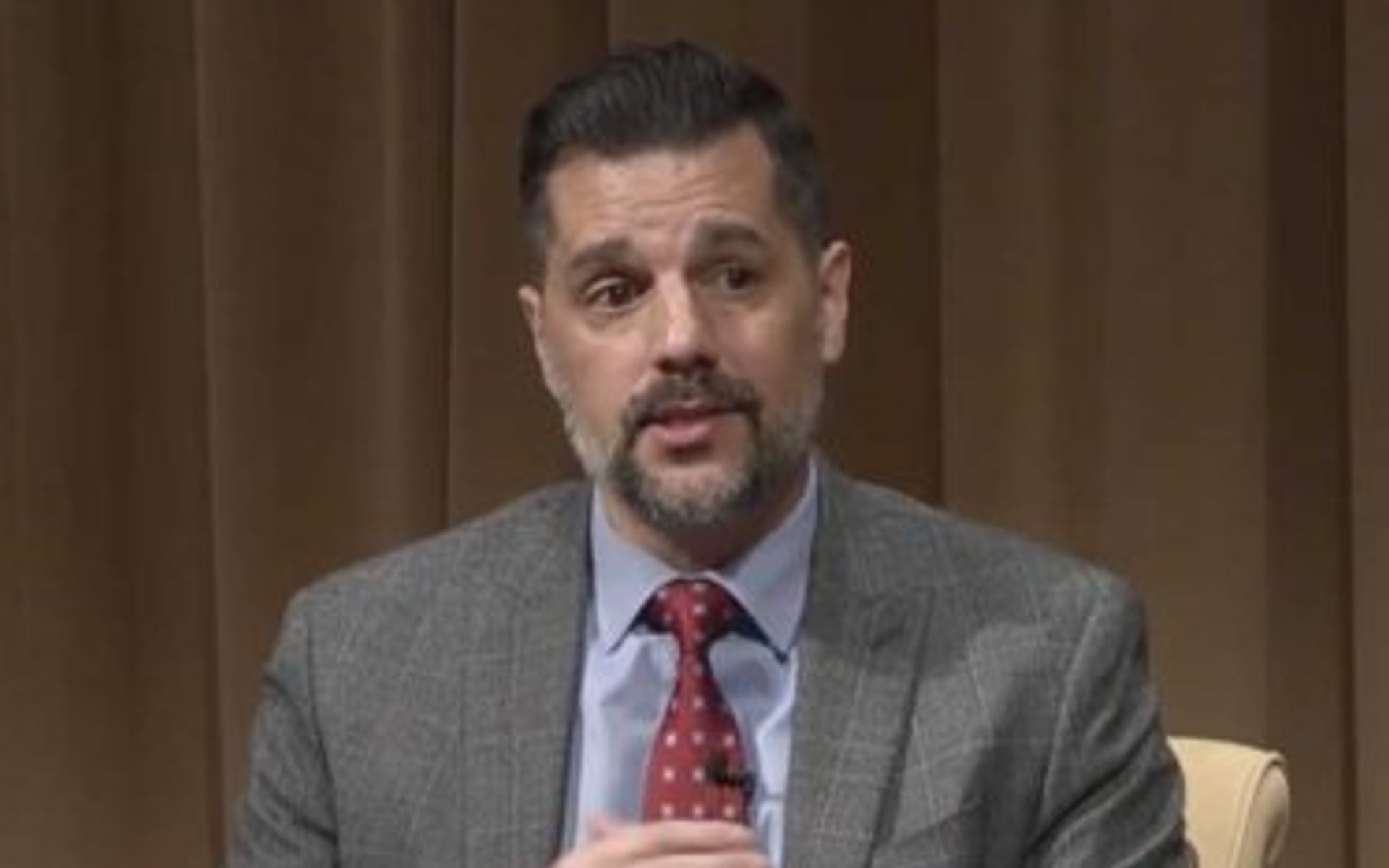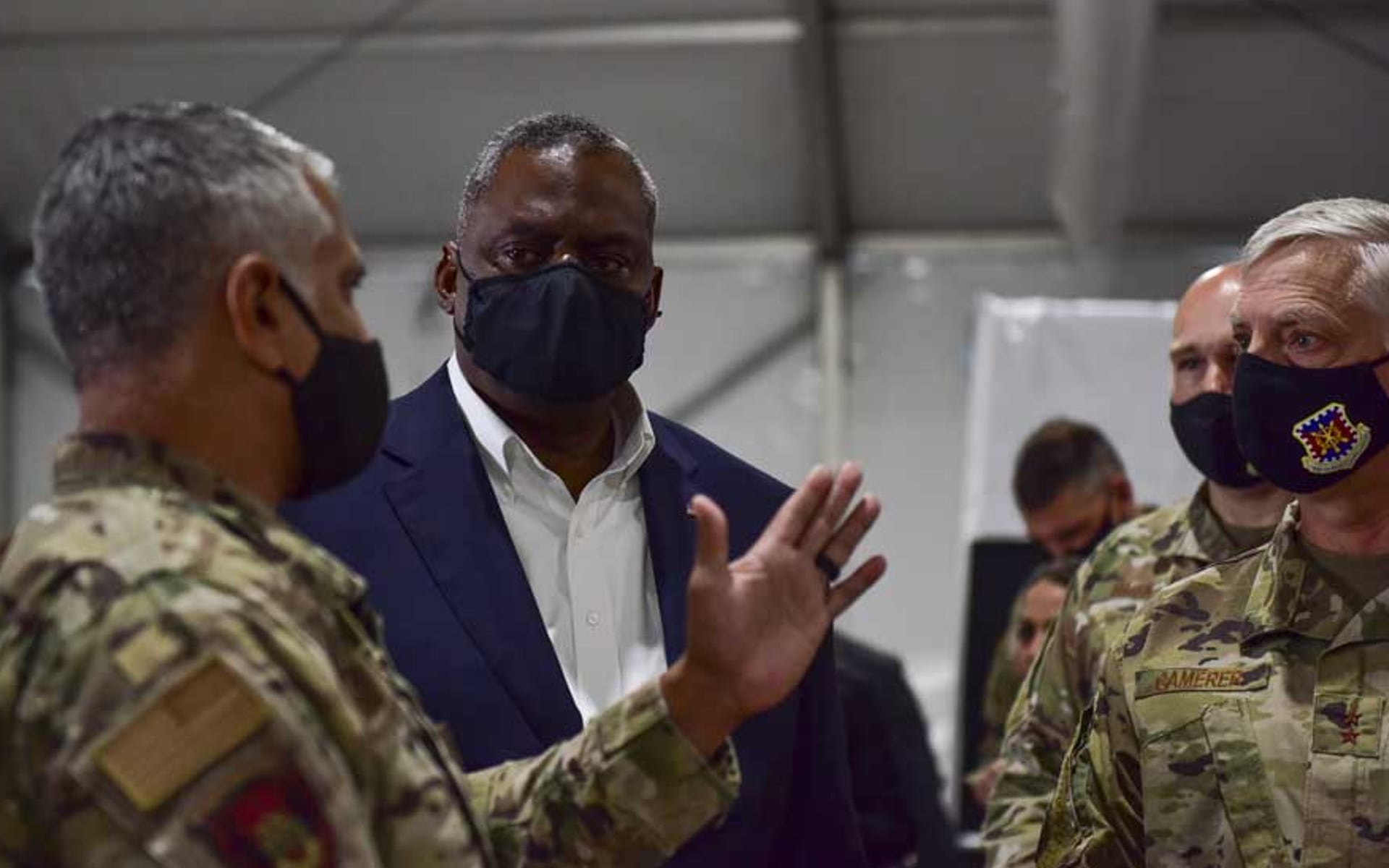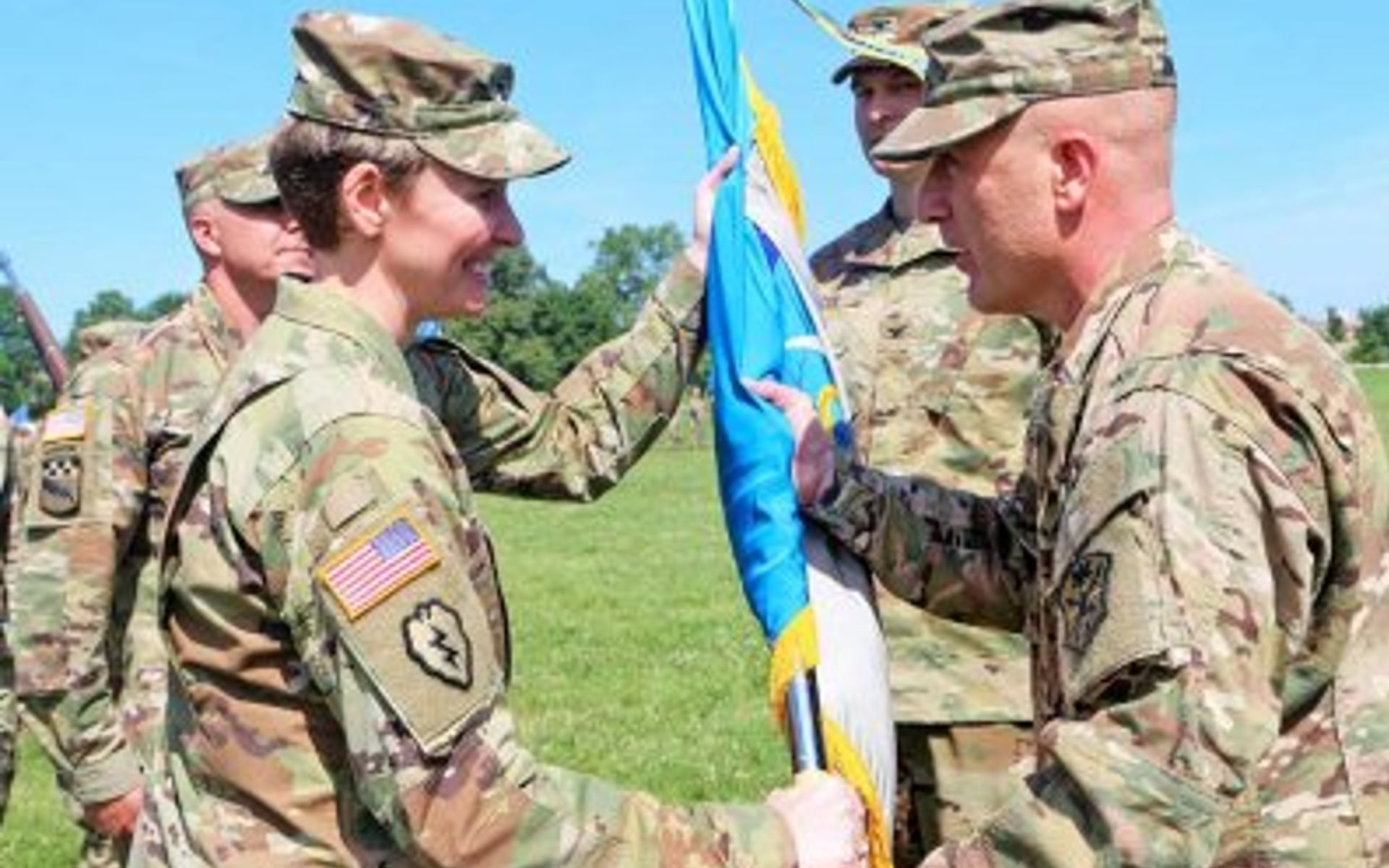Editors Note: This article first appeared on The War Horse, an award-winning nonprofit news organization educating the public on military service. Subscribe to their newsletter.
As Conrad Crane got ready for a date one Friday night in 1975 while stationed at Homestead Air Force Base, Florida, he received a call from the commander of his Nike Hercules missile battery. The CO wanted to conduct a surprise inspection of the barracks with drug-sniffing dogs.
Expecting some debauchery three days before payday, Crane, a platoon leader and battery executive officer at the time, unsuccessfully tried to convince the commander to call off the inspection. He refused.
“The Air Force drug dogs had so many alerts in the first three rooms that they burned out their olfactory nerves, and the Air Force had to put them down,” says Crane, a retired Army lieutenant colonel and chief of historical services and support at the U.S. Army War College.

Because the dogs lost their senses of smell, Crane says the Air Force tried to sue his battery to recover the cost of the dogs. And Crane could do virtually nothing to get rid of his drug-addicted soldiers: Rather than kicking them out, he could only send them to rehab. Like the rest of the country, the military also faced race-relations problems around this time, as well as deep resentment, if not anger, among many enlisted soldiers toward the officer corps, Crane says.
“It was just difficult to get rid of the bad apples—and there were so many bad apples,” Crane says.
The war in Vietnam had just ended. The draft was over. And nobody was signing up to join the military — even as the Cold War continued, with its threat of nuclear war with the Soviet Union. At the same time, military leadership licked its wounds and went back to what it knew: tanks and planes.
As the war in Afghanistan brings an end to the forever wars, experts worry about an experience similar to what the military faced after the Vietnam War: an exodus of exhausted troops, an increase in substance abuse and racism, and leaders who may be so focused on beefing up the defense budget that they don’t pay attention to the task of new warfare, even as China threatens Taiwan, Russia threatens Ukraine, and the diminished resources and landscapes caused by climate change send military planners scurrying to keep up.
But Crane and other experts say that, done right, the moment could provide a chance to pause — to think about what those future battles might look like, and to brainstorm how the military could pivot from scandal to spearhead in how it handles racism and sexism, and how it could encourage a new generation to join its ranks.
‘What needs to come out of this is a more honest discussion’
After the Vietnam War, there was a great deal of interest in integrating new weapons, like the Abrams main battle tank, Bradley infantry fighting vehicle, and Apache attack helicopter. As the Pentagon focused on how to defeat Soviet tank battalions charging through the Fulda Gap and taking West Germany, leadership worked to train a professional officer corps, as well as to develop the National Training Centers needed to practice land warfare. Lost were the counterinsurgency techniques developed in Vietnam: Small-unit tactics didn’t necessarily demand big civilian contracts, and they weren’t needed during the Cold War and Desert Storm.
But fully five years after the 9/11 attacks and after the United States had already established itself in Iraq and Afghanistan, the Pentagon again deemed counterinsurgency methods necessary, and Gen. David Petraeus called in Crane to help write a counterinsurgency manual, beginning with his experiences in Vietnam as well as the military’s then-classified fight in El Salvador.
“Our adversaries are constantly watching what’s going on in Iraq and Afghanistan,” Crane said at the time. “They’re adapting and drawing insights, and they’re going to make us fight this different kind of war. This manual is not a solution for Iraq or Afghanistan, but it will prepare soldiers and Marines for where we are going in the future and the enemies we will face.”

But the COIN manual didn’t always trickle down to the company — or political — level in a meaningful way, and Crane’s group essentially had to push troops trained to “break things” to think about “winning hearts and minds.” New presidents and new generals brought in more troops, trained local militaries to fend for themselves, and even tried to negotiate with the original enemy, but then they watched in disbelief as ISIS took over hard-won areas of Iraq, and the Taliban took over Afghanistan without even a hint of a fight.
In the aftermath of the Vietnam War, as well as in the first couple of years in Afghanistan and Iraq, the Army learned tactical lessons in counterinsurgency missions, says Gregory A. Daddis, a retired Army colonel and director of the Center for War and Society at San Diego State University. But American civilian leaders failed to recognize that no matter how many thousands of service members deployed, billions of dollars were invested, or new four-star generals assumed command, they would not accomplish the stated mission: to equip and train Afghan security forces that could independently keep Taliban fighters from taking over the country.
“Over the course of the last few decades, we’ve had this faith that a new approach, a new strategy, a new commander will come in and somehow save the day,” Daddis says, adding that this doesn’t accord with the historical record.

But this does: Once again, discussions at the Pentagon focus on great power competition, reflecting what former Secretary of Defense Robert Gates coined as “next war-itis.” The institutional Marine Corps and Army tend to plan for the next war, rather than being introspective about what went right and wrong as conflicts wind down, says Heidi Urben, a retired Army intelligence commander and Chamberlain fellow at Howard University.
Those tendencies — as well as the seemingly eternal push for more defense spending — may send the United States toward a repeat of Cold War expectations as the Pentagon rolls out the B-21 strategic bomber, Triton unmanned surveillance aircraft, light amphibious warships, and hypersonic missiles.
When there’s no existential threat, political leaders must work harder to justify hundreds of billions spent on the defense establishment. Casting China as a “pacing threat” — ”the only country that can pose a systemic challenge to the United States in the sense of challenging us, economically, technologically, politically and militarily,” as Defense Secretary Lloyd J. Austin III has said.

“What needs to come out of moments like this is a more honest discussion about matching political objectives to military capabilities,” he says.
‘What do you get ready for?’
Critically thinking through issues of readiness, modernization, and emerging threats will be essential, experts say, as the United States navigates the way forward from Afghanistan.
Today, it seems unlikely the Fulda Gap will provide a battleground. Special Forces will undoubtedly continue to use counterinsurgency methods essentially worldwide. Drones make warfare seem more like a video game to the voting public. And the threat of cyberattacks will mean the treasure portion of “blood and treasure” could hit on a personal level as every civilian could be at risk. In the background, the threats of old lurk.
While the Pentagon’s focus remains on modernizing information systems, integrating unmanned vehicles, and demonstrating interoperability with the militaries of allied nations, emerging threats have forced the Pentagon to pivot.
The United States finds itself in an ambiguous dance with China over the island nation of Taiwan. Although there has never been an ironclad security commitment to defend Taiwan if China invades, modern weapons continue to flow into the country. Last year, U.S. Special Forces released a video of Green Berets training alongside Taiwanese commandos.
At least 90,000 Russian troops have staged along the Ukrainian border and stoked unrest against the pro-Western government. The United States has transferred high-end anti-tank missiles and patrol ships to the country, according to Reuters. The California National Guard also has maintained a state partnership program with the Ukrainian military that has shared expertise in border security, emergency response, and civilian-military relations since 1993.
Great power competition isn’t the only mission in front of military planners. U.S. forces are still fighting ISIS and al-Qaida in Syria, Iraq, the Horn of Africa, and other areas of conflict.
Before sending U.S. forces into a new war, the U.S government must realize that the United States will have to stay in that country for a long time, Crane says. The most recent successful interventions — World War II and the Korean War — still require an American military presence more than 70 years later.
And he wonders whether it is more important to develop new technology or new ideas about engaging in wars.
“What do you get ready for?” Crane says. “The most likely mission is probably some kind of stability operation, or the most dangerous mission — which is this full-scale, blown-out war, which requires all kinds of combat stuff — and so it’s a dilemma.”
Politically, more spending plays out as more national security, as well as more money for states that house defense manufacturers — which means there’s an eternal cycle of lobbying and campaign contributions and contracts slipped into the annual budget.
“And clearly, as we’ve seen both in the Cold War, and today, there are political rewards for showcasing your commitment to national security,” Daddis says. “It’s much safer politically to focus on the threat of China than it is to focus on the threat of climate change.”
The withdrawal from Afghanistan creates a window for the Army and Marine Corps to invest in cyber warfare. The Army tends to favor traditional combat arms — infantry, armor, and artillery — as central to what the service is and how it prioritizes funding and manpower, Urben says. But these forces may not be the linchpin in future conflicts.
“While I agree that it is a phenomenal opportunity to invest, I’m somewhat pessimistic on anticipating wholesale resource shifts away from, say, Brigade Combat Teams in order to further invest in nontraditional roles that you speak of, like cyber,” Urben says.
‘It’s a family business’
As senior leaders make these decisions, there has been little pressure from voters to change how things are done. This comes in large part because of the military/civilian divide. Less than 10 percent of the U.S. adult population has served in the military, according to the Pew Research Center, and because so many people are recruited from the same geographical and socioeconomic categories, many Americans don’t have family members or neighbors who serve.
“My own observation of what’s going on [in] the Army is it’s a family business,” Crane says. “What you’ve got is more and more of the soldiers are coming from the same places. It’s nowhere near the melting pot it was during the draft.”
The nation’s privileged youth have largely been steered toward attending prestigious universities and pursuing private-sector careers. And many families in this demographic view military service as a risky endeavor better suited for someone else, Crane says.
This means the American public is not at war and doesn’t personally bear the consequences of choosing conflict.
President Joe Biden remains among the few political leaders with a child who has served in the military. Having more politicians with the same personal stake in a war could make the country think twice about attacking, Crane says.
But just as with the end of the Vietnam War, scandals and battle fatigue will likely impact military recruitment efforts — not just in numbers, but in quality.
“The Army was more than hollow. Parts of it were very rotten,” recalled Gen. Montgomery Meigs, former commander of U.S. Army Europe, about the end of the Vietnam War. In 2001, Meigs wrote an article about his leadership experience in the Army War College’s Parameters.
In 1972, the Army under Chief of Staff Gen. Creighton Abrams sought to rebuild, and the service created an “expeditious discharge program” that allowed commanders to bypass court-martial. The U.S. Army in Europe ejected 1,300 soldiers in just four months to boot drug addicts, gang members, and other troublemakers, according to The Generals: American Military Command from World War II to Today, by Thomas E. Ricks.
But it wasn’t enough. Benefits and pay decreased during the 1970s, and recruiting fell with it, according to the Congressional Research Service. By the end of the decade, both the Army and Navy missed their recruiting goals, and only half of soldiers had graduated from high school. And more than 40 percent of the new soldiers got booted before their first enlistment ended–often for bad behavior.
“The challenge Army leaders had in the late 1970s was rebuilding an army, and it was done in the context of transitioning to a volunteer force,” Urben says. “That was seismic, and we don’t have that same task ahead of us today.”
At the time, the military couldn’t raise the money it needed to operate its units at full strength, let alone fund modern weapons. Introspection took a backseat to survival. Beyond the defeat, the Defense Department faced major scandals that affected public perception: The My Lai massacre led to cries of “baby killers” as soldiers returned home. In 1965, Black soldiers made up about 22 percent of all combat deaths in Vietnam, though they made up only 11% of the force. And while the percentage dropped to about 13 percent by 1967, it ultimately led Black soldiers to avoid the infantry, as well as to seek a skill that would be marketable in the civilian world. Drugs remained a problem through the 1970s. And while Black and white soldiers served side by side during the war, racism again came to the fore when they returned home.

As the services struggled, officers left for better opportunities or didn’t commission in the first place, according to the Congressional Research Service.
Today, scandals have once again roiled the conversation:
The murder of Spc. Vanessa Guillén forced the Army to take a hard look at how it has failed to move the needle on rooting out sexual harassment and sexual assault in the ranks. Earlier this year, service leaders took to social media to convince any opponents that women make the military more lethal and capable.
But women, people of color, and members of the LGBTQ+ community look at these types of scandals and wonder if there is a place in the military where they feel like they belong. Service members have been told to find another job if they harbor intolerance, but in some cases, admitted extremists have been allowed to remain in uniform for months.
The Pentagon has said it plans to discharge service members who have declared allegiance to extremist groups.
Some leaders have internalized a false sense that they can either do their job well or focus on stewarding their unit’s internal culture — but they can’t do both, Urben says. But much of the change, as well as the introspection, must come from within.
“The idea that the constant churn of deployments back to back is preventing us from really getting quality attention to the systemic challenges within our ranks…” Urben says. “Hopefully that myth steps to the wayside.”
Still, that voluntary, professional force may be the military’s saving grace, Daddis says. While many veterans of Afghanistan were upset to see the country fall to the Taliban within weeks of the last American boots leaving, and certainly many see the need for cultural change, they may not be ready to give up a career they’ve put ahead of personal safety, family, and comfort.
In fact, in spite of the hit to morale, don’t expect an exodus, Daddis says.
“I don’t necessarily think that you will see a brain drain, if you will, after Afghanistan,” he says, “because there’s still going to be committed professionals in the organization that want to see [it] succeed — especially in the aftermath of what many consider to be a failed effort.”
This War Horse feature was reported by Daniel Langhorne, edited by Kelly Kennedy, fact-checked by Ben Kalin, and copy-edited by Mitchell Hansen-Dewar.
Daniel Langhorne is the Engagement Editor for The War Horse, managing social media, newsletters, and membership development. He started his journalism career at the Orange County Register as a staff writer covering city government, the Nixon Presidential Library, housing, education, and water. Since 2015, Daniel has reported on military affairs and many other topics for Military.com, Law360, and the Los Angeles Times. Daniel earned his bachelor’s degree in English and Political Science from Chapman University.